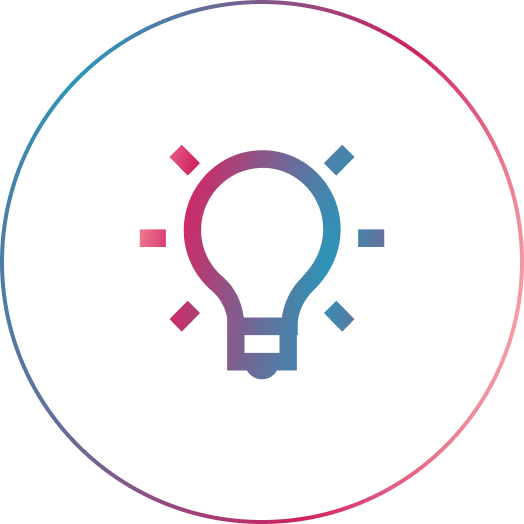Lately, digital marketing trends seem to be defined by intelligence, personalization, and precision. Especially for B2B marketers, it’s safe to assume that success in the near future will hinge on understanding how buyer behavior, technology, and content expectations are evolving. The key will be crafting a 2026 marketing strategy that adapts quickly to an ever-changing landscape.
The rules of engagement are changing as algorithms get smarter, buyers become more discerning, and the blend of human creativity with artificial intelligence starts to reshape what effective marketing looks like. Take a look at what the next year holds and how your brand can stay ahead with the help of Three29.
Buyer Behavior Is Evolving Beyond the Funnel
Traditional linear funnels, made of up awareness, consideration, and decision, are quickly losing relevance. In 2026, you can expect B2B buyer journeys to be self-directed and deeply influenced by peer networks and AI-driven insights. Decision-makers are already consuming content on multiple platforms simultaneously, cross-referencing data, and seeking social proof before engaging with sales. This will only happen more and more.
The modern B2B buyer expects instant relevance and authenticity which means your brand presence can’t just be strong in one channel, but that it has to be consistent across all of your search, social, and professional networks. Instead of focusing purely on lead capture, marketers should start prioritizing brand trust and educational engagement to deliver value long before a “form fill” ever happens.
One tip from our experts is to revisit your content mapping. In 2026, “bottom-of-funnel” content will likely often be discovered first through search or social algorithms. Think about how each asset (whether it be video, article, or case study) can stand alone while still aligning with your overall messaging.
AI Integration Is Moving from Novelty to Necessity
If 2024 was the year that AI got everyone’s attention, 2026 will be the year it becomes the backbone of nearly all digital marketing operations. From data-driven content optimization to predictive campaign modeling, AI is already streamlining workflows and surfacing insights that were previously buried in spreadsheets.
Smart marketers are already using AI tools to:
- Personalize landing pages in real time based on visitor behavior
- Forecast content performance before publishing
- Automate segmentation and scoring for more qualified leads
- Craft ad copy variants that dynamically adapt to audience preferences
However, the key shift in 2026 won’t just be about using AI, but it will be about guiding it. Companies that train AI models on proprietary customer data will gain an enormous competitive edge and create marketing that feels human but scales like automation.
On a cautionary note however, as AI-generated content floods the web, authenticity will be a differentiator. The brands that truly succeed in the long run will be those that blend AI efficiency with genuine human creativity and emotional intelligence.
Answer Engine Optimization Becomes Essential to Organic Visibility
As part of this AI ecosystem shift, 2026 will be the time to acknowledge that SEO by itself is no longer enough to boost organic reach. B2B buyers are increasingly turning to AI-powered platforms like ChatGPT, Gemini, and Perplexity to find quick, credible answers during their research phase. This is where Answer Engine Optimization (AEO) becomes essential.
AEO focuses on making your content citable in AI-generated answers by structuring your content in formats that machines can understand and surface it in conversational responses. Importantly, AEO doesn’t replace traditional SEO, and an effective organic strategy pairs the two together. For B2B marketers, having your content referenced, quoted, or summarized in the platforms expands your brand’s reach and positions your business as a credible source when buyers are actively seeking solutions.
Content Expectations Are Higher Than Ever
The content over-saturation has likely reached its breaking point, and in 2026, audiences won’t tolerate filler, fluff, or anything else that feels recycled. The new bar for engagement will be expert-level, insight-driven content that feels like it could only come from your brand.
Buyers are gravitating more and more toward:
- Interactive experiences like quizzes, configurators, and guided demos
- Video-first storytelling that conveys complex information quickly
- Micro-content: snackable posts, visuals, or snippets that pack value fast
Perhaps the biggest trend is the rise of “knowledge commerce.” Brands are building trust by teaching using webinars, digital courses, and deep-dive guides. Instead of asking for attention, they are earning it by delivering real expertise.
An action item for marketers? Try auditing your content library. In your 2026 marketing strategy, try cutting 30% of low-performing assets and reinvest in high-value, multimedia formats that position your brand as a category authority.
The Rise of the Unified Marketing Ecosystem
SEO/AEO, paid search, email, and social media no longer operate independently like they did in the past. Instead, they are converging into what many are calling the “multi-channel intelligence loop.”
In 2026, data fluidity will be even more essential. Imagine your CRM, analytics, and ad platforms talking to each other in real time and doing things like adjusting bids, segmenting audiences, and retargeting based on dynamic user behavior. That’s not futuristic, in fact it’s what leading marketers are already building!
This multi-channel alignment allows marketers to:
- Maintain consistent messaging across all of their digital touchpoints
- Deliver cross-platform personalization without redundancy
- Identify hidden conversion paths that traditional attribution misses
For B2B teams, this is going to be especially powerful. Buyers may read a LinkedIn article, click a Google ad, attend a webinar, and only convert weeks later via email outreach. A connected tech stack ensures every interaction adds to a clearer picture of the buyer journey.
Data Privacy and Ethical Marketing Take Center Stage
Even as personalization becomes more advanced, data ethics are becoming non-negotiable. Regulations across the U.S. and EU are tightening, and buyers themselves are growing more protective of their digital footprints.
In 2026, successful marketers will adopt transparent data practices and value-based data exchanges. Instead of relying on cookie banners, they’ll focus on transparency by explaining how data is used and what their customers receive in return.
Trust will be the new currency of digital marketing, and brands that prove themselves reliable stewards of people’s data will stand apart in an industry where credibility is everything.
Predictive Marketing Becomes the New Optimization
While analytics have always guided strategy, predictive insights will soon redefine performance measurement. Marketers will soon use AI to anticipate customer intent, rather than just reacting to it.
Instead of analyzing what happened, predictive models will forecast what’s likely to happen next by identifying high-value accounts before they engage, or signaling when a deal is at risk based on behavioral data.
This shift means the metrics that matter most will evolve, too. Vanity metrics like impressions and clicks will take a back seat to pipeline velocity, intent lift, and engagement quality which are better indicators of real revenue potential.
In short, the smartest B2B brands won’t only track outcomes, but they’ll actually predict them.
Preparing for 2026’s Digital Marketing Trends – The Three29 Perspective
At Three29, we believe the future of digital marketing trends belongs to brands that are adaptable, data-conscious, and hyper customer-focused. As the landscape grows and changes, preparation means more than adopting the latest tool, but truly rethinking the fundamentals.
Here’s how to get ready for the coming year:
- Invest in your data infrastructure. Ensure your CRM, analytics, and automation tools are integrated and capable of real-time intelligence sharing.
- Humanize your automation. Use AI to enhance creativity, rather than to simply replace it. Let technology handle the routine so your team can focus on strategy and storytelling.
- Double down on authenticity. As digital noise increases, people will crave genuine human connection. It’s stories that generally resonate, not scripts that sell.
- Align your teams. In 2026, marketing and sales need to act as one ecosystem, unified by data and shared goals.
The coming year promises to bring more change than ever, but with change comes more opportunity. The businesses that thrive will be those who view transformation not as a disruption, but as a chance for evolution.
Partner with Three29 for Success
The digital marketing trends shaping 2026 point toward a smarter, more connected, and more human future. AI will enhance rather than replace the marketer’s craft, and content will become more immersive and valuable.
Your 2026 marketing strategy shouldn’t just react to these shifts, but should actually anticipate them. Because when it comes to digital marketing, staying relevant means staying one step ahead. Partner with Three29 to plan and execute your marketing strategy for the coming year and reap the benefits of a dedicated, experienced team behind you. Want to learn about our services? Book your free strategy call today!




